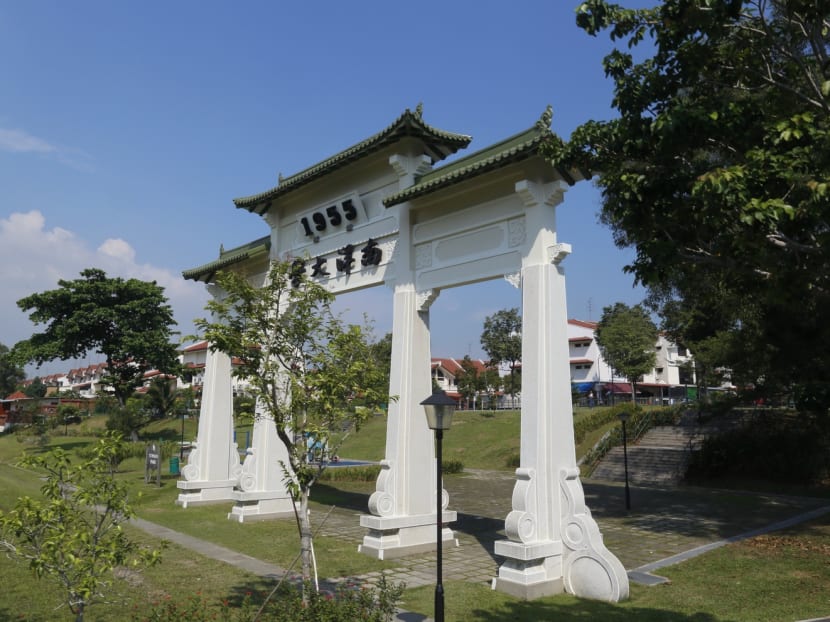Spy camp, drive-in theatre part of newJurong Heritage Trail
SINGAPORE — Not too many people know or would remember that Jurong was once a spy training ground during the Japanese Occupation in the 1940s, and also home to Singapore’s first hawker centre and only drive-in theatre.

The Nanyang Gateway Arch, the entrance to the old campus of Nanyang Technological University, is part of the new Jurong Heritage Trail. Photo: Ernest Chua
SINGAPORE — Not too many people know or would remember that Jurong was once a spy training ground during the Japanese Occupation in the 1940s, and also home to Singapore’s first hawker centre and only drive-in theatre.
These little-known aspects of Jurong’s history have been documented in the new self-guided Jurong Heritage Trail for the area by the National Heritage Board (NHB). The trail, which will be officially launched on Saturday, is the NHB’s 13th and latest.
“The stereotype of Jurong is that it is merely an industrial town,” said Ms Stefanie Tham, spokesperson for the NHB’s Education and Community Outreach division, at a media preview of the trail yesterday. “But through our research, we realised that there’s so much more about Jurong than just its industrialisation history.”
The trail features 35 Jurong sites and spaces, including 12 heritage markers around the area. The markers include one at Jurong Hill, the highest point in Jurong at about 60m high, which hosts a Garden of Fame, where heads of states and dignitaries, such as Britain’s Queen Elizabeth II and the late Chinese leader Deng Xiaoping, planted trees to commemorate their visits.
Tanjong Balai, now part of Jurong Port, used to be the site of a spy and guerrilla training camp, where the Japanese military also attempted to build a submarine base during World War II.
Other markers include the former Jurong Drive-In Cinema, Singapore’s first and only drive-in theatre, which opened in 1971. Run by Cathay Organisation, the cinema could accommodate about 900 cars and 300 people. Movies were screened at 7pm and 9.30pm each day, and tickets cost S$2 for adults and S$1 for children.
Retiree Soh Ah Choo, 70, used to catch movies with her friends at the open-air cinema. But she said the cinema had its drawbacks, especially on rainy days when the visibility of the screen was affected.
Another marked heritage site was Singapore’s first hawker centre, Yung Sheng Food Centre, now known as the Taman Jurong Market and Food Centre.
Madam Chia Thor Kee, 84, recalls selling prawn noodles and laksa on a pushcart in the area in the 1960s. Because of the stream of customers from the nearby industrial buildings she had to work from 5am to 2pm daily, and conditions then were unhygienic.
She eventually moved into the first hawker centre along Yung Sheng Road where ventilation was better, she added. Her fish-soup stall is now run by her daughter at the Taman Jurong Market and Food Centre.
The trail is being launched as part of Singapore HeritageFest, which runs till May 18.
Besides the Jurong Heritage Trail, members of the public can also go on 12 other trails around Singapore, such as those in Tiong Bahru, Toa Payoh and Kampong Glam.






